Wonderful Winter Mushrooms
Autumn is undoubtedly prime mushroom season in terms of mass and diversity of species present. However, there are marvellous mushrooms to find year round and winter should certainly not be overlooked by fungi enthusiasts! Winter is a great time to see lots of the hardier perennial mushrooms as well as some cold weather specialists. Here are some of my favourite wonderful winter mushrooms I have found this season.
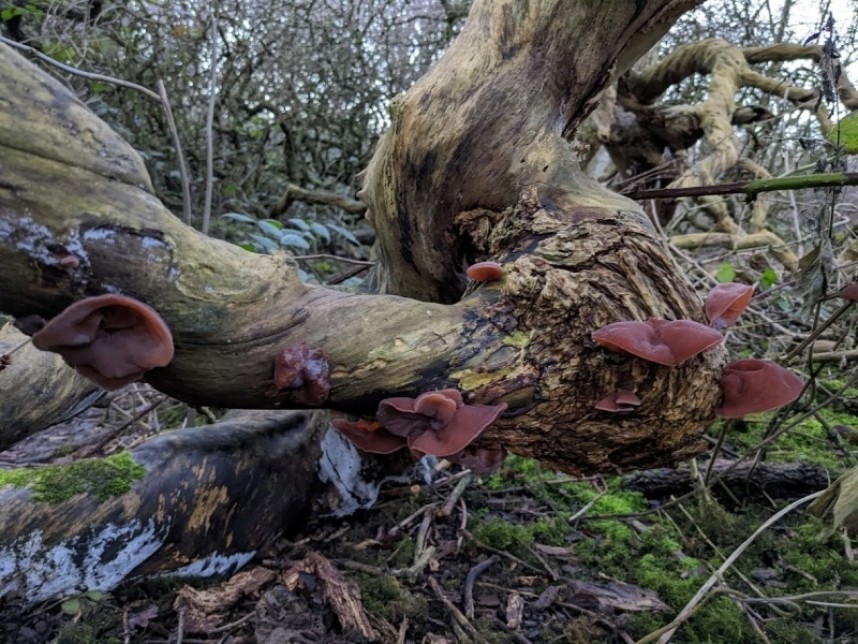
Auricularia auricula-judae – Jelly Ear © Ellie Davison
Jelly ears are one of the UK’s most common and widespread mushrooms. They are so called because of their gelatinous texture and resemblance to ears. They are most commonly found growing on elder, but sometimes on other hardwood such as beech. This hardy perennial mushroom can withstand being frozen solid and will continue to grow once it thaws. The Latin name comes from Judas Iscariot, who is thought to have hanged himself on an elder tree after betraying Jesus. Folklore suggests that these mushrooms are manifestation of Judas’ tortured spirit.
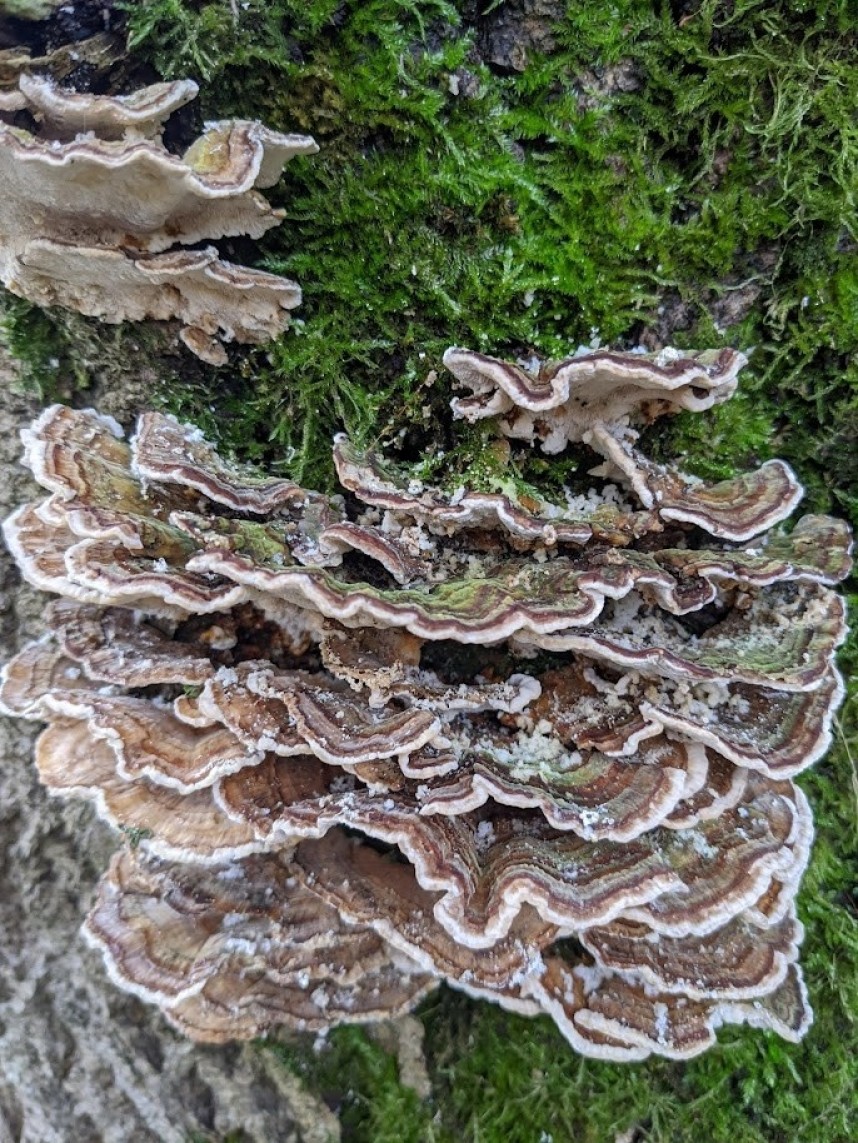
Trametes versicolor – Turkey Tail © Ellie Davison
Turkey tail, formerly known as the many-zoned polypore in the UK, is a colourful and attractive bracket fungus. The rings on the surface can be a dazzling mix of blues, reds, oranges and browns but the outer edge is often pale. The surface of this mushroom has a velvety texture when young, and becomes smoother with age. In the past it has been used to make beautiful table decorations and even to decorate hats!
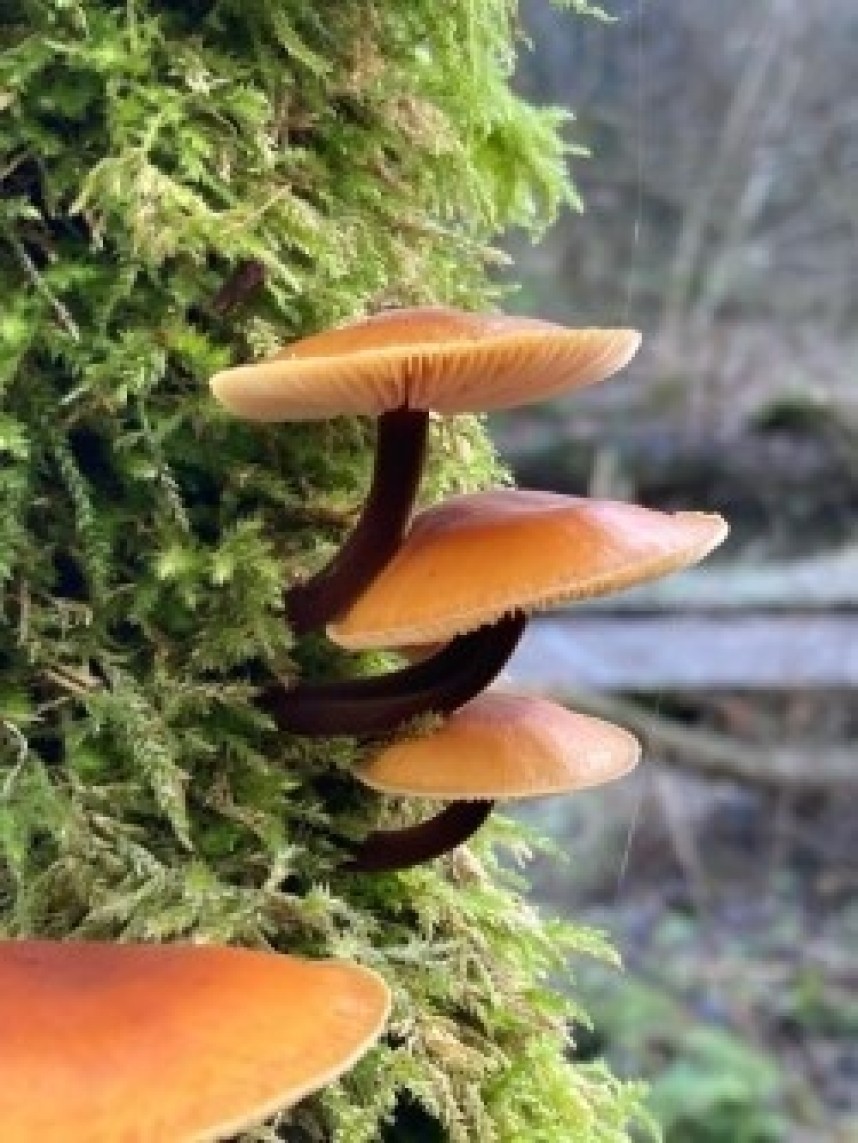
Flammulina velutipes - the Velvet Shank © Dave Arnott
This delightful mushroom is prized by foragers and is a real treat to find in the winter months. They are mainly found on dead deciduous tree stumps. Velvet shanks are commercially cultivated in low light conditions as enoketake for East Asian cuisine. The growing conditions make enoketake grow long, pale and thin with a very small cap - almost unrecognisable to its wild counterpart.
As with any wild mushroom, beware of poisonous lookalikes if intending to forage. Velvet shanks have a few superficially similar species but one to be particularly wary of is Galerina marginata, aka the funeral bell. The funeral bell has a light brown to dark brown stem with a small skirt. Velvet shanks have no skirt and stems tend to be velvety black in older specimens, but can be light brown when younger. A spore print can help confirm ID if unsure. The funeral bell has a brown spore print and the velvet shank’s is white.
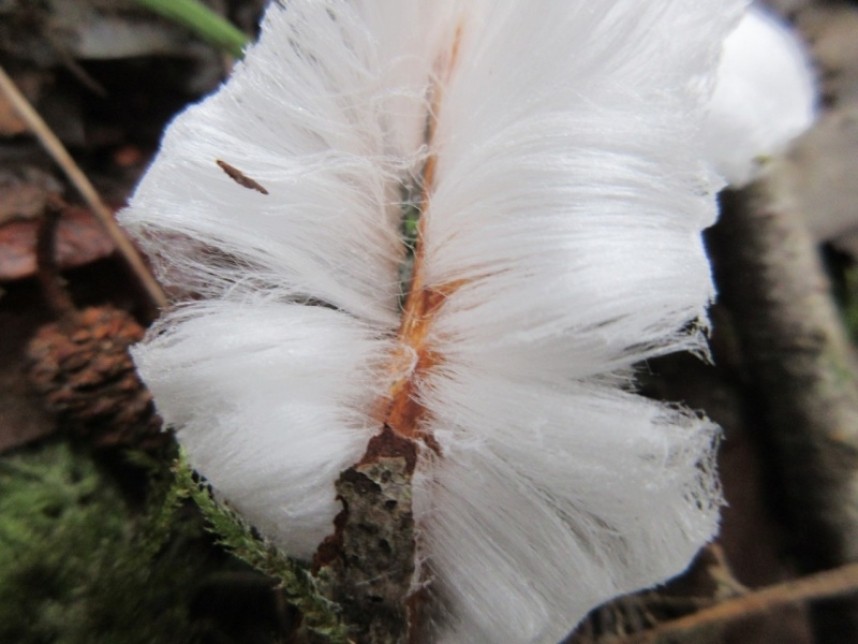
Exidiopsis effuse causing ‘hair ice’ © Rachel Pickering
In 2015 this bizarre phenomenon, called hair ice, was linked to the presence of the fungus Exidiopsis effuse. It requires specific conditions – moist broadleaf deadwood, high humidity and a temperature of slightly below 0 degrees. The fungus’ activity in the deadwood can prevent ice recrystallization. This results in the ice forming thin strands about the same thickness as human hair, rather than in the usual thicker formations. This spectacle can remain for hours, sometimes days, until it melts.
To read more about this fascinating process, follow the link below for the research paper by Hofmann, Preuss and Mätzler.
bg-12-4261-2015.pdf (copernicus.org)
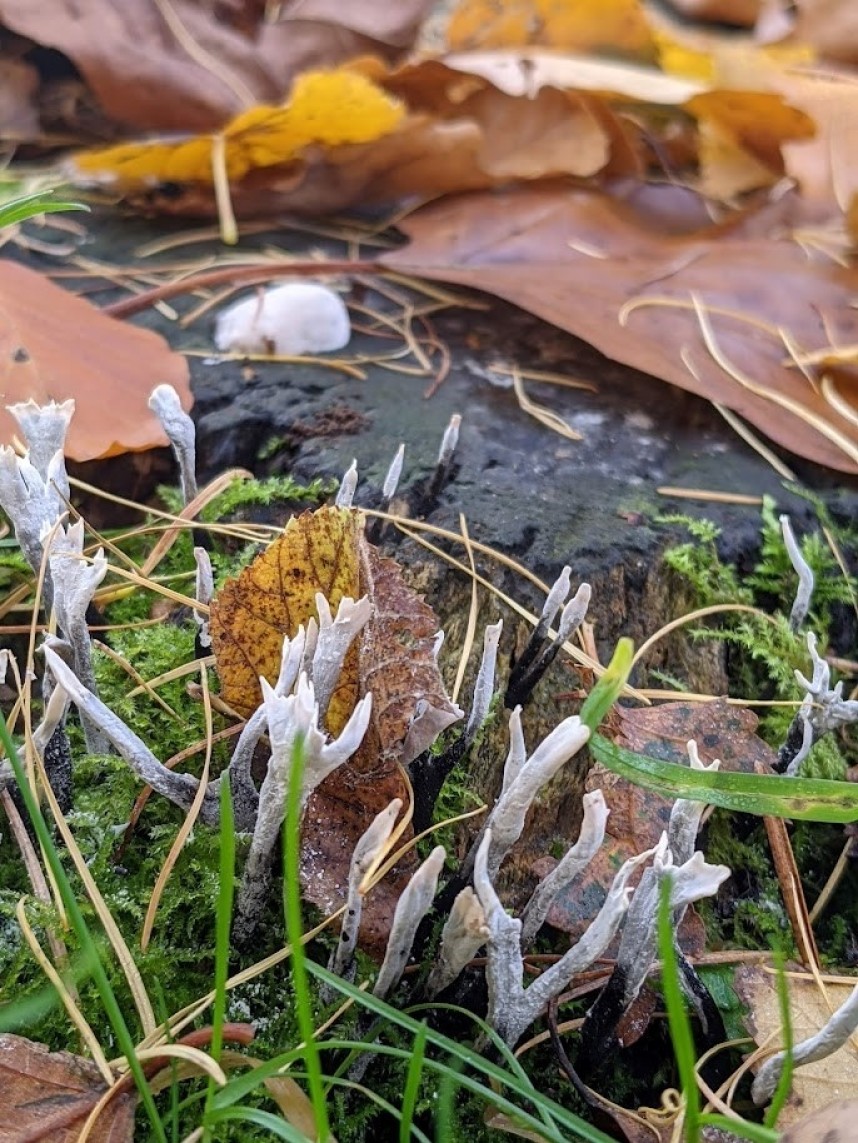
Xylaria hypoxylon – Candlesnuff fungus © Ellie Davison
Candlesnuff fungus is a very common species in the UK that can be found on broadleaf deadwood. Its common name describes its physical resemblance to a snuffed out candle wick, but also nods to its (slight) bioluminescence. This is not strong enough to be picked up by the human eye, but can be seen though an image intensifier or on a camera with a very long exposure.
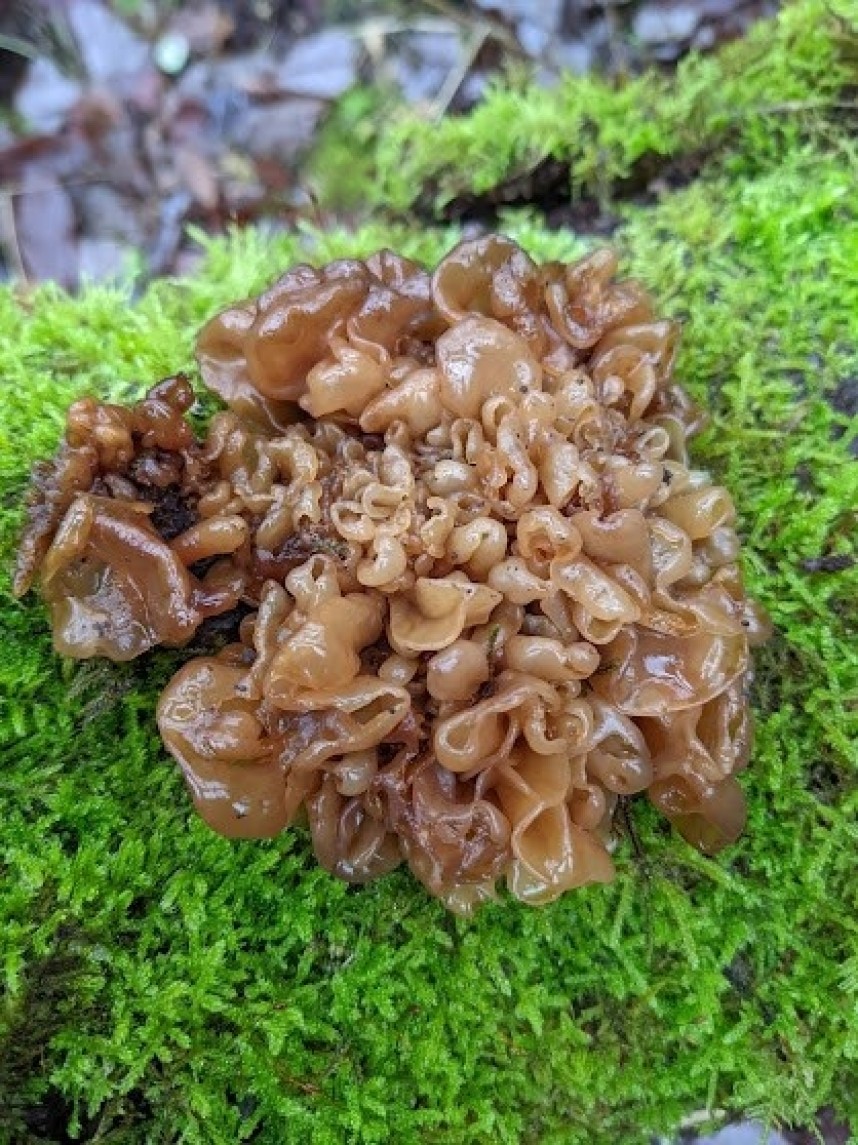
Tremella foliacea – Leafy Brain © Ellie Davison
This fantastically weird fungus can be found year round but is most visible in winter. It grows on dead broadleaf and coniferous trees. Interestingly, it doesn’t consume the wood it grows on but rather the crust fungus Stereum hirsutum, the Hairy Curtain Crust.
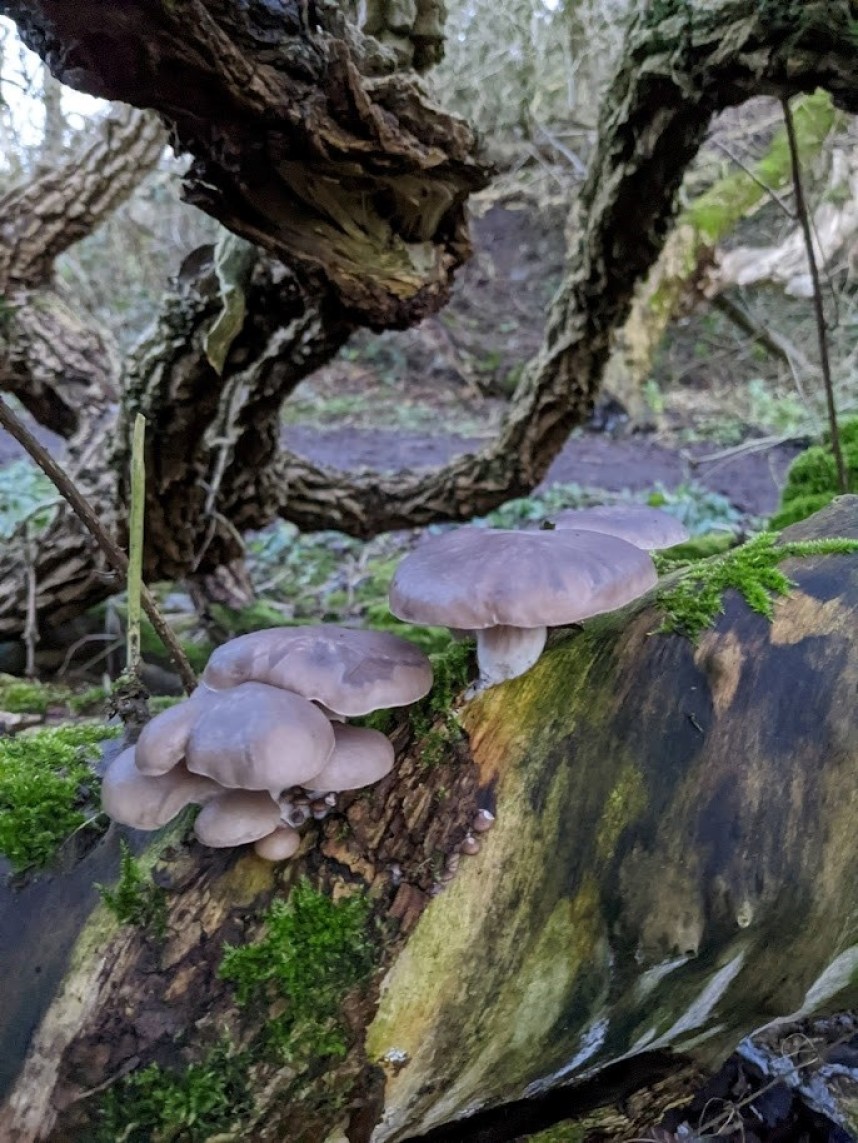
Pleurotus ostreatus – the Grey Oyster © Ellie Davison
Oyster mushrooms are a common sight in our woodlands and are primarily known as a wood decay fungus and are gaining popularity for their culinary value. They are also one of the best known fungal nematophages, meaning they can consume certain nematode species. This nitrogen rich food source allows oyster mushrooms to thrive in nutrient poor environments. They kill the worms by releasing powerful toxins that cause massive calcium influx and rapid cell necrosis. The fungal hyphae then penetrate and digest the nematode. This has the potential to provide a basis for an alternative to our current
drugs used to control the nematodes which pose a threat to the health of humans, crops and livestock. This is particularly important now due to growing drug resistance.
To learn more about this fascinating process, CLICK HERE
The incredible diversity of the fungi kingdom never ceases to amaze me. I love learning about the ecology, folklore, and potential uses of the different species I find. If you want to learn more about fungi, try finding some local fungi foray events to learn from the experts. I can’t wait to see what fungi finds spring will bring!
Ellie Davison.
Ellie works for the North York Moors National Park as a Conservation Trainee. We look forward to more fungi blogs from Ellie after this great start! Richard YCN.
Note: foraging in England and Wales is not illegal as long as what is collected is not intended for commercial use.
A lot of edible wild mushrooms have several inedible lookalikes that can make you seriously ill or even kill you. If you are intending to eat one, make sure you are 100% sure of what you have picked and never rely on apps as they can miss important ID features. Never munch on a hunch!
Picking mushrooms doesn’t necessarily harm fungi but over picking may reduce its chance of reproducing so leave some behind to disperse their spores and leave rarer species be.



 Back to Blog
Back to Blog
